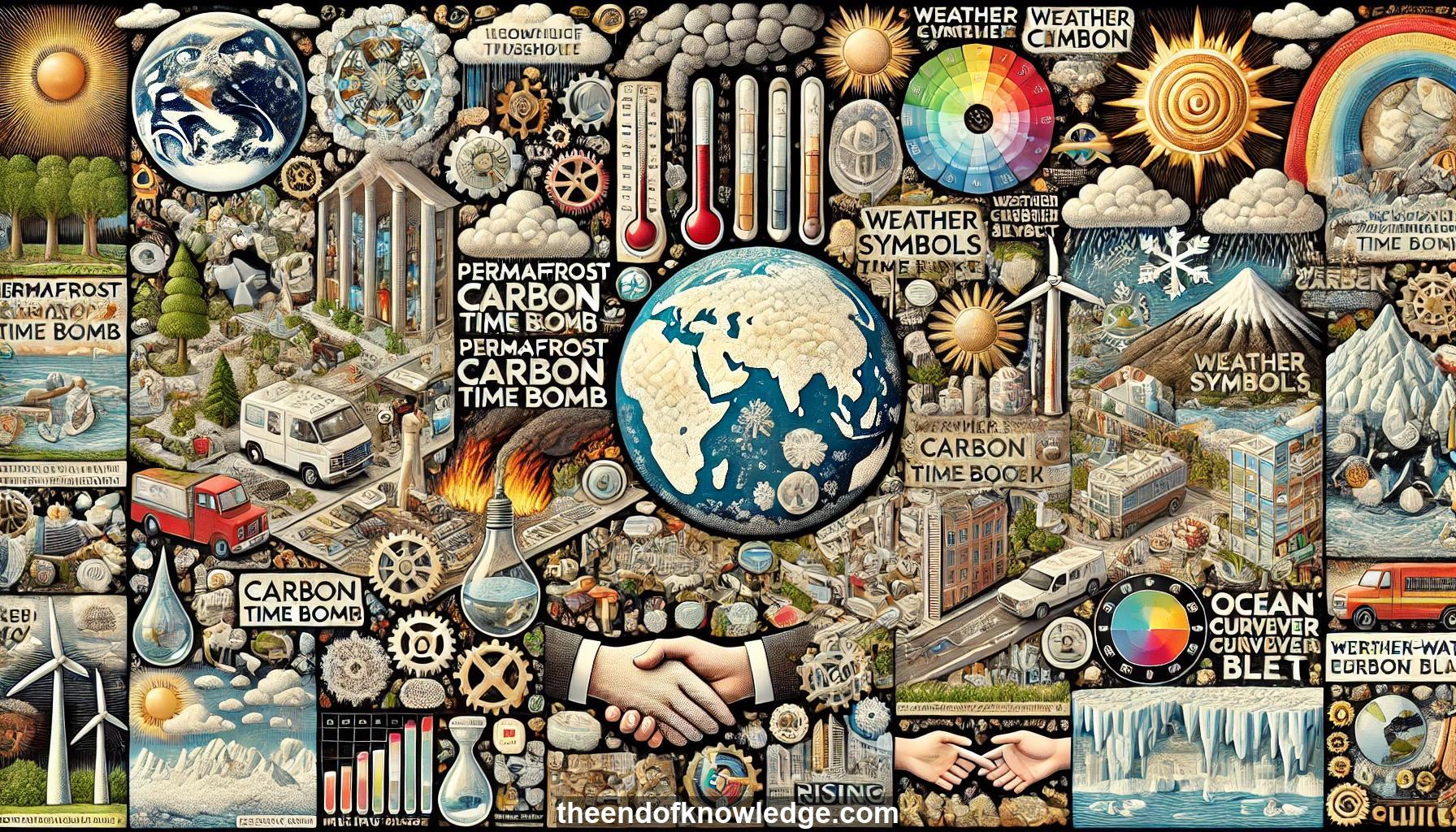 >
>
Concept Graph & Resume using Claude 3.5 Sonnet | Chat GPT4o | Llama 3:
Resume:
1.- Cryosphere: Earth's surface components containing frozen water, including glaciers, ice sheets, permafrost, sea ice, and snow cover.
2.- Climate change: Global warming trend observed over the past century, especially accelerating in recent decades.
3.- IPCC: Intergovernmental Panel on Climate Change, assesses climate change science and impacts.
4.- Climate system: Interaction of atmosphere, hydrosphere, lithosphere, cryosphere, and biosphere leading to complex climate dynamics.
5.- Anthroposphere: Human influence now considered a major driver of climate warming.
6.- Greenhouse gases: Emissions from human activities disrupting Earth's radiation budget, with CO2 as primary contributor.
7.- Extreme weather events: Increasing frequency and intensity of heat waves, storms, and other climate extremes due to global warming.
8.- Sea level rise: Ongoing increase in global sea levels due to thermal expansion and melting ice sheets/glaciers.
9.- Arctic changes: Rapid warming and sea ice loss in the Arctic region, with cascading global impacts.
10.- Sustainable Development Goals (SDGs): UN targets for addressing global challenges by 2030, including climate action.
11.- Paris Agreement: International treaty on climate change mitigation, adaptation, and finance adopted in 2015.
12.- Cryosphere components: Include continental (glaciers, permafrost), marine (sea ice, ice shelves), and aerial (snow, ice crystals) elements.
13.- Albedo effect: High reflectivity of snow and ice surfaces influences Earth's energy balance.
14.- Phase change energy: Large energy transfers during melting/freezing of ice and snow affect climate.
15.- Permafrost carbon: Thawing permafrost releases stored carbon, potentially accelerating global warming through positive feedback.
16.- Ocean circulation: Meltwater from ice influences global ocean currents, redistributing heat between low and high latitudes.
17.- Water resources: Cryosphere plays crucial role in freshwater supply, especially in arid and semi-arid regions.
18.- Cryosphere services: Benefits humans derive from cryosphere, including water supply, climate regulation, and cultural values.
19.- Cryosphere science structure: Integrates mechanisms, changes, impacts, adaptation, and sustainability across multiple disciplines.
20.- Global water towers: High mountain regions with snow and ice providing crucial water resources to surrounding populations.
21.- Third Pole: Asian high mountain region, including Himalayas and Tibetan Plateau, critical for water supply to billions.
22.- Supply-demand imbalance: Melting mountain cryosphere may lead to water scarcity in dependent downstream regions.
23.- Coastal vulnerability: Low-lying coastal areas at risk from sea level rise, especially in Asia.
24.- Long-term sea level projections: Potential for multi-meter rise if Greenland and West Antarctic ice sheets melt completely.
25.- Cryosphere monitoring: Need for expanded observation networks to better understand key processes and mechanisms.
26.- Cross-disciplinary approach: Integration of natural and social sciences for addressing cryosphere-related challenges.
27.- Cryosphere-human wellbeing links: Connections between cryosphere changes and socio-economic impacts through various services and hazards.
28.- Adaptation strategies: Developing methods to cope with and mitigate impacts of cryosphere changes.
29.- Cultural impacts: Loss of ice threatening unique cultures and ways of life in cryosphere-dependent regions.
30.- State Key Laboratory of Cryospheric Science: China's pioneering research institution focusing on integrated cryosphere studies.
Knowledge Vault built byDavid Vivancos 2024